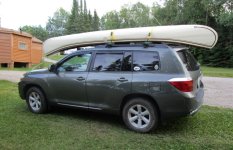In this video, the YouTuber demonstrates 3 knots that are useful for camping, hiking, and bushcraft: the stopper knot, the double dragon knot, and the farrimond hitch. The stopper knot is a simple knot that prevents things from slipping through loops. The double dragon knot is a strong and versatile knot that can be used to create a loop in the middle of a rope or around a fixed object. It is stronger and more secure than a bowline knot. The farrimond hitch is a friction hitch that can be used to create tension on a line. It is easier and more secure than a tautline hitch or prusik knot.
The canoeist will also want to know the trucker's hitch for cartopping, which is not part of this video.
The canoeist will also want to know the trucker's hitch for cartopping, which is not part of this video.

